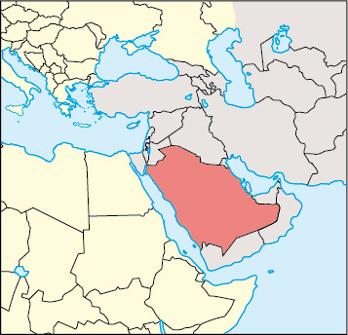What is the Capital of Saudi Arabia? Riyadh

Riyadh is the capital and the largest city in Saudi Arabia. Riyadh is located in the Najd region, in an oasis in otherwise barren surroundings, roughly in the middle of the Arabian Peninsula. In the metropolitan area, there are 6,370,000 residents (estimate for 2015, UN Population Division).
Riyadh is the country’s leading trade, education and administration center, with a significant petroleum refining industry. The city has several universities, the oldest from 1953.
Riyadh has an international airport. The Al Faisaliyah Center, a 267-meter building, was completed in 2000 and is the country’s first skyscraper. The Kingdom Center, at 302 meters, was completed in 2002. Many mosques, as well as the Royal Palace, are also located in Riyadh.
The city was built by the Wahabites in 1818, in 1902 became Riyadh’s capital under Ibn Saud.














































